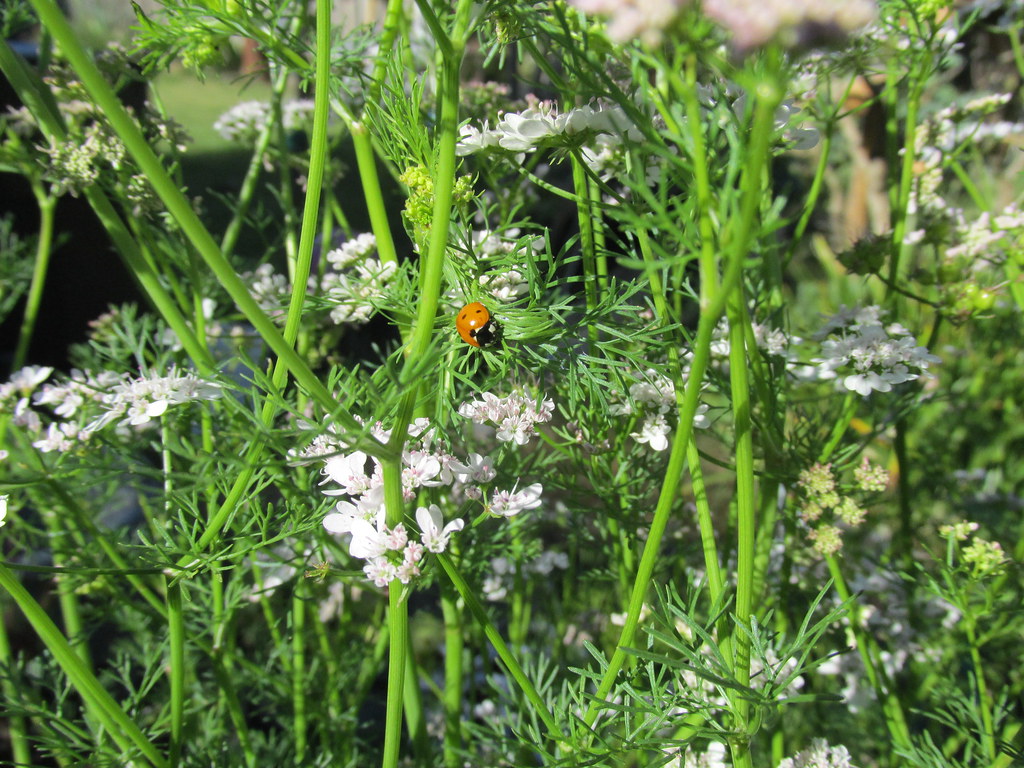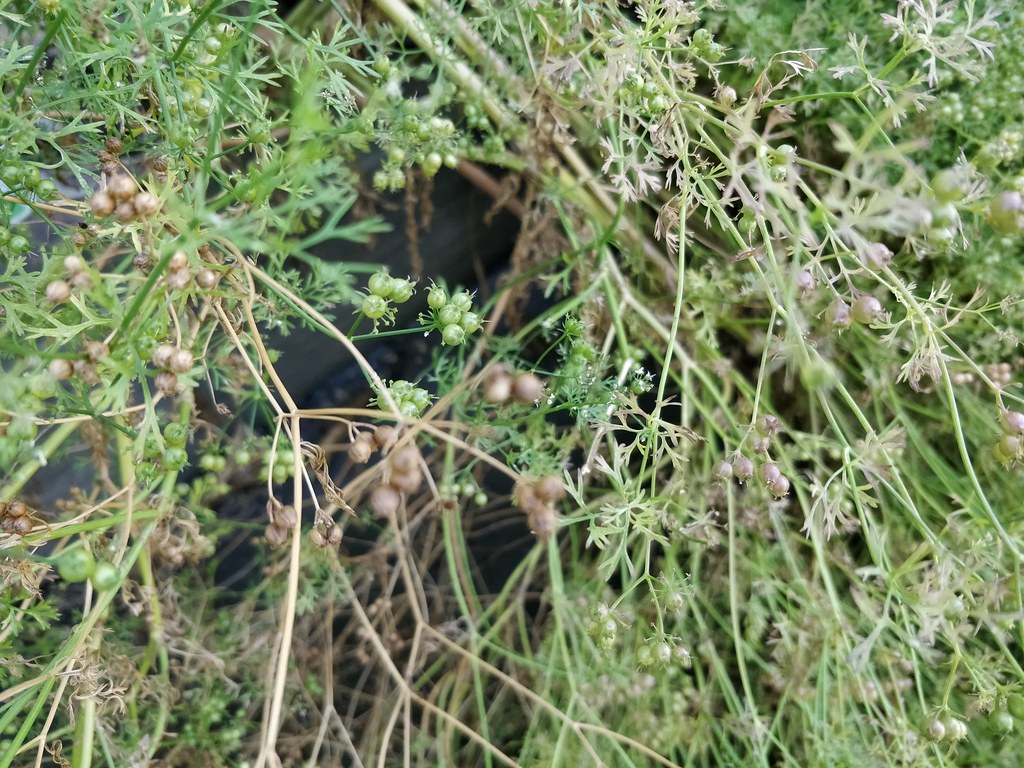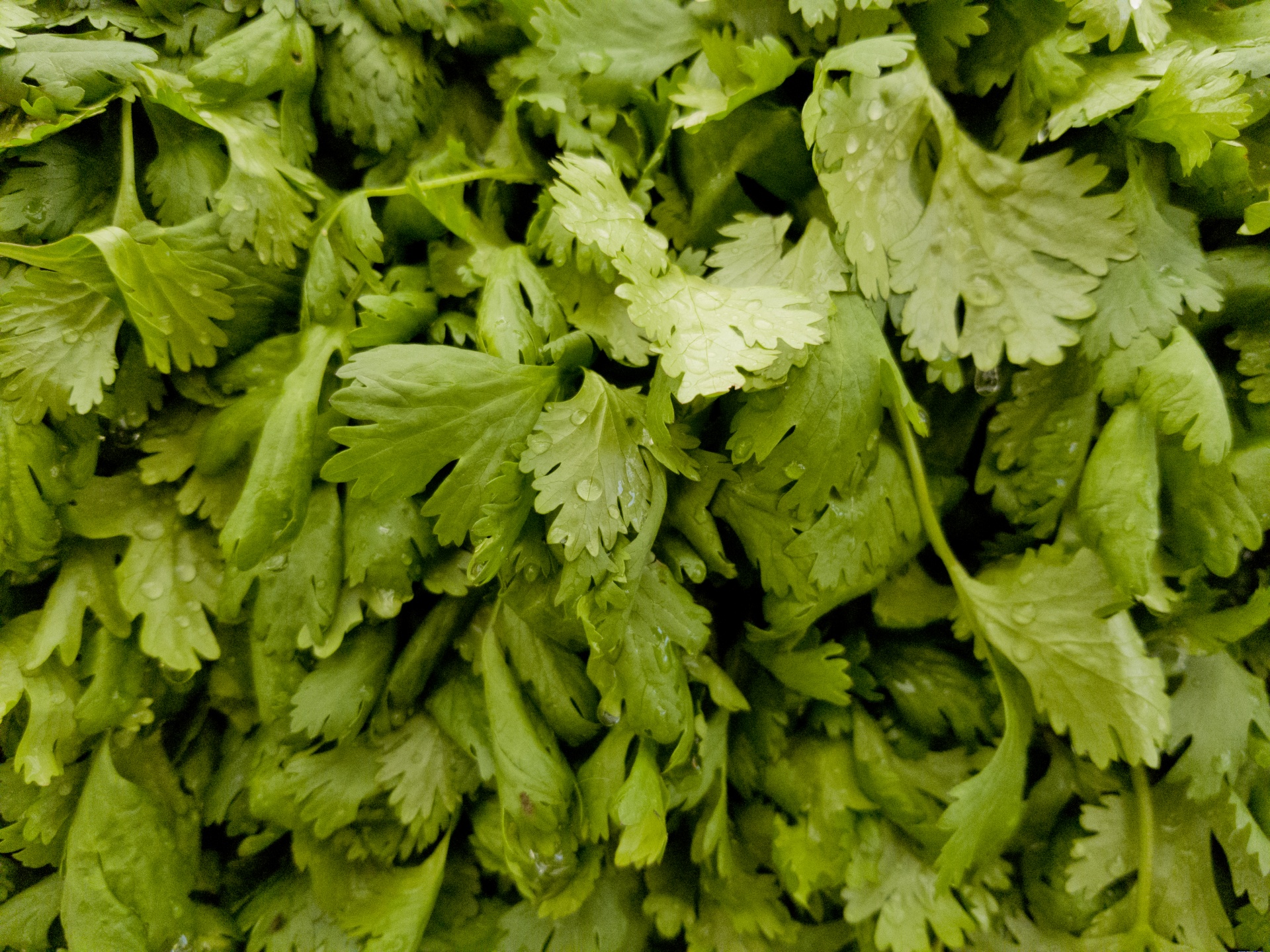Before we go further on how to prune cilantro, it’s better to find out what and how cilantro is.
There is a bit difference between cilantro and coriander.
In the United States, cilantro and coriander is different. Cilantro deals with the leaves while coriander is the seeds.
While in the UK it is just coriander.
No matter what you call it, cilantro is a kind of plant that offers many uses, one of which is for medical purposes.
In short, pruning cilantro can be carried out in many different ways. For instance, you can prune cilantro by light pruning a few stems or doing it in clumps. Another option is pruning the flowers only.
Well, pruning cilantro seeds is also possible but make sure the plant turns yellow and brown first.
How to Prune Cilantro
What a good news! Growing cilantro is extremely easy at home and it can even grow in a sunny pot. This way, you can wish the plant to grow between 18 to 24 inches tall and 12 to 18 inches wide.
Well, this plant need no pruning until it is ready to harvest. However, you need to remove the flowers to keep it growing longer.
As one of the herbs, cilantro provides some techniques to prune.
These techniques are mainly based on the intended use and your personal choices. Before and after pruning, it is highly recommended to sterilize the pruning shears using the rubbing alcohol.
Light Pruning
The first way on how to prune cilantro is light pruning. Light pruning helps keep your herb neat and give you the right amount of cilantro anytime you need to prepare meals.
So when you think you are ready to harvest the cilantro leaves, cut the stems at their basis four to six inches long. This way, you can cut a few stems or up to 1/3 of them. Don’t cut stems more that recommended since it can weaken the plant.
If you see the plant or herb is weakening, you will see it will produce flowers earlier. This means that the plant is shortening its lifespan.
So it is better to prune any yellow, wilted or damaged leaves to prevent this occurring and never over prune.
Pruning Clumps
Now if you need a large amount of cilantro leaves, you can select pruning clumps as a technique of pruning cilantro. This technique offers you a combination of large, mature leaves and small tender leaves. When cilantro leaves are pruned in clusters, they may re-sprout. However, they can die.
Pruning in clumps requires you to grab the base of cilantro plant and prune the stems at their base.
This way, you can start cutting one to two inches above the soil surface. Keep clumping together and tie twine around the base.
If you want to keep cilantro fresh after pruning, standing the cilantro clump stems in cold and clean water is considered the best way. This will help you to keep them fresh until you are ready to use them.
Pruning Flowers

When you are seeing at the cilantro flowers, it is probable that you are questioning what to do with the cilantro flowers, right? Pruning flowers is the answer!
When the plant reaches the end of the growth cycle, white, pink and lavenders flowers are blooming. This is the time when Cilantro dies after its flowers and produces seeds.
However, pruning cilantro flowers can help extend the plant growing season.
The step on how to prune the flowers can be done by pruning the flower stems when they just appear to keep the plant growing as long as possible. Look for the stems with the green buds at their ends and don’t hesitate to prune the stems at their base.
Pruning Coriander Seeds

In addition to how to prune cilantro, you can also go through the steps on pruning coriander seeds.
Especially after the flowers are pollinated, the seeds grow on the cilantro plant.
If you are growing cilantro to get coriander seeds, never harvest the leaves or remove the stems which are flowering. This way, the seeds will be ready around 90 days after the plant turns to yellow and brown and the pods form.
If you want to prune the seed pod stems, you can simply cut them at their base. Later, hang the seed pods upside down in a paper bag in a cool airy area. So the seeds can fall out of the pods into the bag.
What if you are living in a mild climate? If so, leave the pods on the plant to let it self-seed.
When To Prune Cilantro
Now that you have already known how to prune cilantro, the next thing to check out is the right time to prune cilantro.
Basically, cilantro is short-lived annuals and cannot bear frost or hot dry weather. They will grow well in the spring or fall.
However, you can enjoy growing this plant indoor year around.
Note, pruning cilantro at the right time helps to keep the plant productive and delay flowering.
Maturity Date
Are you wondering when the cilantro can be harvested? Cilantro leaves need 60 to 70 days to get its mature date for the first harvest.
Once the plant reaches around six inches high, you can start trimming the outer leaves from the plant. This way, never cut the inner leaves to keep cilantro growing continually.
Typically, new foliage of cilantro will be produced to trim every five to seven days for about 21 days.
After this period, the plant will begin to set seed. In this case, frequent trimming is good to help delay the flowering process and extend the window of the harvest.
Seed Heads
As we know, the plant will begin to produce seeds after it is flowering.
The seeds will be used to make the spice coriander.
In this case, the cilantro plants need 100 days from germination to set seeds. However, the frequent pruning will help prolong this time.
Once you see the blossoms die and the small seed clusters turn brown, you can start trimming the flower stalk.
Shake the seeds out of the stalks and let them dry in a well-ventilated spot for seven days. Later, store them in an airtight sealed container.
Succession Planting
Succession planting is a must to help you keep cilantro leaves available.
Note, the plant will produce seeds more quickly in the warm months while it will be slowly flowering in spring and summer. Thus, keep the seeds fresh every three weeks after the first trimming of the original plant.
When the second planting grows to a proper height for cutting, the original plants must be pulled up. This is aimed to continue sowing new seeds and removing the old plants before they are flowering for a cilantro supply.
Perpetual Method: How To Trim Cilantro Plant to Promote Growth
Perpetual method is usually applied dealing with the steps on how to trim cilantro plant to promote growth. In this method, trimming the plant frequently is required to provide a supply of cilantro leaves. The leaves will be usable for at least one month.
Typically, cilantro seeds are spread thickly in a pot and you need to thin them after they are sprouting.
As an alternative, you can use perpetual method by cutting back the leaves every week as soon as the plant grows three inches high. In this method, the plant will never reach its maturity due to the fact that it is not allowed to grow before you trim them.
If you decide on using this perpetual method, you can harvest the leaves four times.
However, the plants can still be able to flower if you let them grow too big.
How To Grow Cilantro

So you understand how easy it is to have cilantro in your garden, right? Then you must probably figure out to grow the plant now. Well, it is always possible.
Growing cilantro from seeds is considered very easy and cheap. You can spend only around $2 at your garden store. You can also alternatively grow cilantro from seedlings from a local nursery that offers about %15 or more.
Cilantro can be grown both indoor and outdoor. So you can expect to plant it directly in the ground as well as on an indoor sunny windowsill.
Steps to Grow Cilantro from Seeds
There are typically 5 steps to grow cilantro from seeds.
1 Select the location to grow cilantro
Growing cilantro can be started both in a traditional garden in your backyard and in a variety of containers. Use an aluminum backing tray, ceramic pot or window box as options to plant the cilantro seeds. Put them in partially shaded area since the direct sun can stimulate the plant to flower more quickly. If you are living in a warm weather area, you can simply buy bolt-resistant seeds bred for hot climates.
2 Choose quality soil.
A high quality soil will help cilantro plants grow well and healthy. In addition, you can also thrives with additional compost. Keep in mind that the plant is not picky though some gardeners are seeking for soil mixes with nitrogen to promote the leaves growth.
3 Split the seeds in half.
While you are holding the seeds of cilantro in your hand, use your thumb and split half of the seeds. Then, use your nail to scar the surface of the other half of cilantro seeds. This step will help the seeds for germination.
4 Use soil to cover the seeds.
In planting cilantro seeds, you don’t have to bury them deeply in the soil. They don’t either need to be planted in rows or with the accurate spacing. Simply, just sprinkle the seeds and cover them with the soil. As simple as that.
5 Keep the seeds damp.
The last step to grow cilantro is to keep the seeds damp. Basically, cilantro likes a constant irrigation. If you are living in a warm climates, consider providing a drip irrigation system in your garden that doesn’t come with too much humidity. Watch out the soil and water as frequent as possible.
In 10 days of planting the seeds, you will notice shoots emerge. And in 14 days, you will be able to harvest the cilantro leaves or depending on how you select the time to do so.
Health Benefits of Cilantro Leaves

Dealing with the way on how to prune cilantro, finally you need additionally know the health benefits of cilantro leaves. It is also probable that you will be eager to plant it in your garden if you know what cilantro offers for your health.
Basically, cilantro leave offers lots of benefits for human health.
The plant is a kind of herb which comes with the low calorie. It contains no cholesterol. Further, the leaves provide a large number of essential oils, antioxidants, vitamins and fiber.
Cilantro plant is a good source of minerals such as potassium, manganese, iron, calcium and magnesium.
Cilantro leaves is rich of vitamins like folic acid, beta carotene, vitamin A and vitamin C. Believe it or not, 100 grams of cilantro leaves can serve 30% of the daily recommended level of vitamin C.
For medical uses, cilantro leaves, roots and stem contain antimicrobial compounds. These compounds will help protect the body from particular infections.
Cilantro plant also comes with a high concentration of advantageous antioxidants that help fend off the particular disease. As essential oils, cilantro can be used for analgesic, antispasmodic, aphrodisiac and flatus-reliever.
What’s more?
Cilantro can also work as deodorant, promote weight loss and promote stomach aches. However, you must still consult with your doctor if cilantro can help you these ways.
Conclusion
Finally, it is clear that growing cilantro both in your indoor and outdoor garden is not as difficult as you may think of.
The steps on how to prune cilantro are also simple and easy enough so that you can do it yourself. However, make sure you check out the instruction to get the best result.